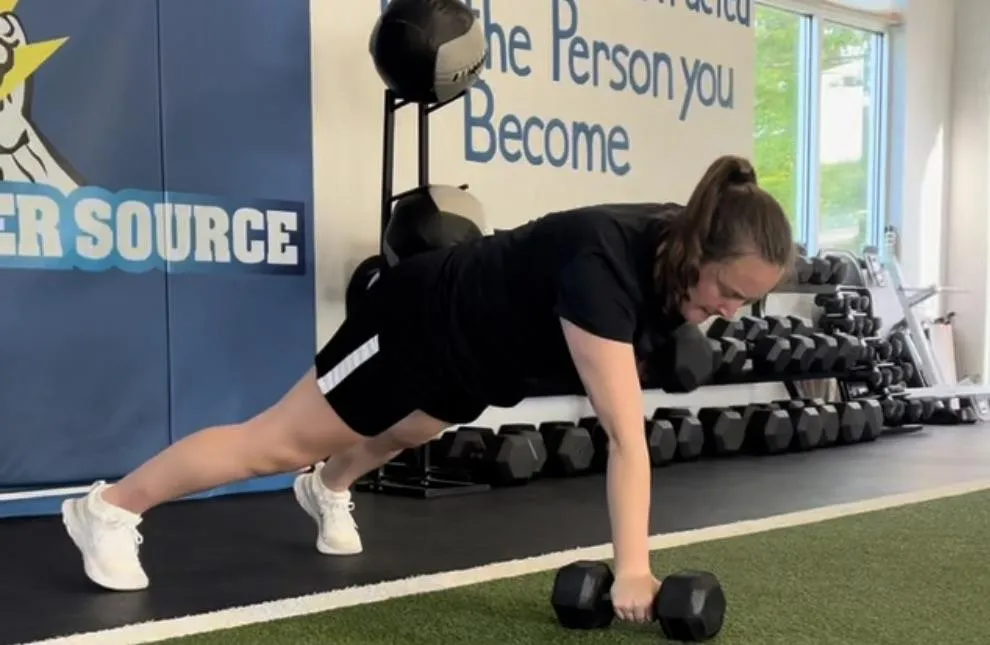ATHLETE BLOG LEOMINSTER

4 Good (And 3 Poor) Athlete Strength Training Strategies
Go to any large sized gym and you'll witness people mostly exercising for two reasons - to lose fat and to build muscle.
Right in line with those goals, you'll see a lot of bodybuilding style strength training and a lot of cardio.
Walk into any training facility that is centered around athletic development, and you'll see a different style of training.
It isn't that athletes don't need to stay lean and build muscle too, it's just that they also need to be fast, powerful, coordinated, and more resistant to injury.
That's a much harder list of goals to accomplish!
But it can be done, if you follow the right training strategies.
Here are a few that I believe are critical to building strength and athleticism at the same time.
For starters, you'll want to integrate core work right into your upper body lifts as often as possible. Using your arms to throw, swing, push or pull in athletics requires core stability at the same time.
Your training should reflect this.
When possible, the best athlete strength drills have a coordination demand to them as well.
Sports requires players to perform highly complex skills. Olympic lifts like cleans and snatches teach you to time the movement of many parts of your body properly.
Jump roping is another common example, and there are many other ways to build coordination into your strength training.
Developing symmetry in the strength of one side of your body to the other will aid in both performance and injury prevention.
Any imbalance will cause you to subtly favor the stronger side, making it more likely to get overuse aches and pains.
Asymmetries also wreak havoc on coordination heavy skills like sprinting/skating speed, and changing direction.
Finally, a good athlete workout program layers in lots of explosive power training.
Medicine ball throws and other rotational power drills build throwing, hitting, shooting, and kicking power.
Explosive jumps and power lifts help with sprinting, tackling, blocking, and an improved vertical.
It is by properly using tactics like these that a kid gains an advantage over their peers who either train poorly, or not at all.
Unfortunately, there is still way too much of a bodybuilding influence on many young athletes workout programs.
Three tactics, in particular, stand out as being particularly ineffective for sports performance.
Isolated bodypart training is the biggest concern. We're talking about things like leg extensions, bicep curls, tricep extensions, and more.
The worst offender being the leg press.
As was stated above, athlete training is just as much about enhancing coordination as it is building pure strength.
Isolated movements throw off the natural balance between various muscles, which leads to less fluid movement ability.
The leg press is the worst because it can be loaded with tons of weight, greatly strengthening the muscles that extend the knees.
Yet it does nothing to equally strengthen those that extend the hips, throwing off the delicate balance of the two groups.
The idea of "leg day", or "back and biceps" workouts are also poorly suited for athletes.
Bludgeoning one group of muscles with tons of training all at once leads to days of soreness afterwards.
In a world where kids play sports year-round, this soreness negatively affects the fine motor skill timing required to perform sport skills.
You're simply not going to play well in a 4 game tournament over the weekend if you did 36 sets of leg strength drills on Thursday!
A more balanced workout program allows athletes to train during even the most challenging stretch of their athletic calendar without a decrease in performance.
That allows for more physical development time, which gives you a massive advantage when followed over many years.
Finally, the idea of a middle or high school athlete regularly maxing out how much weight they can lift is dangerous and unnecessary.
Beyond the immediate concerns of falling or getting crushed under the weight, the long term effect of how your body adapts to this stress makes it far more likely you'll end up with joint problems in your shoulders, knees and lower back.
Strength can be effectively developed through anywhere from 60-90% of your maximum ability, and is much safer.
Anyone who strength trains often enough will get better, which is a big part of why it has become such a draw to so many people.
The ones who use better training strategies will simply progress faster compared to those don't.
The longer that advantage occurs, the greater the benefit you'll receive from the smart training plan.
Power Source Reviews
© Copyright 2024. Power Source. All rights reserved.
|
